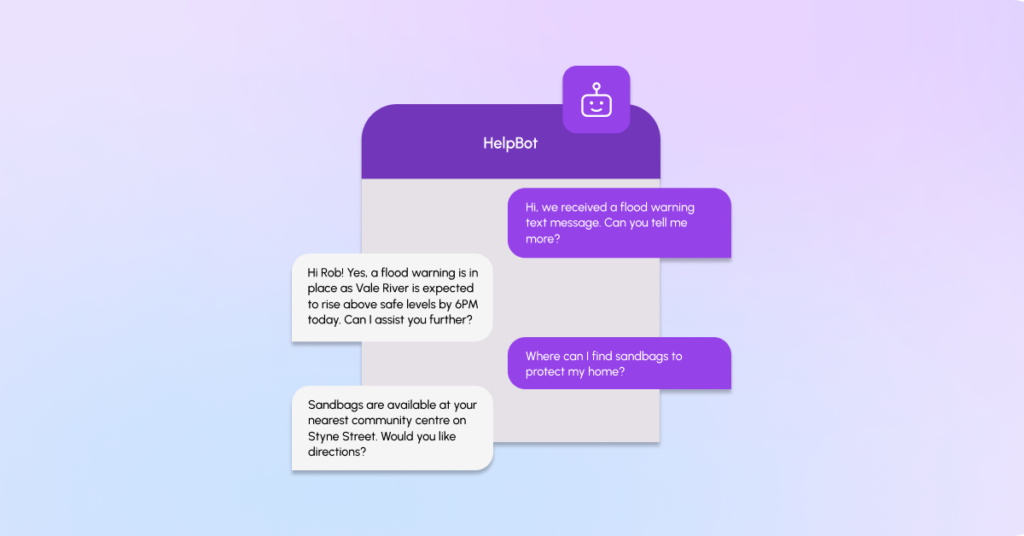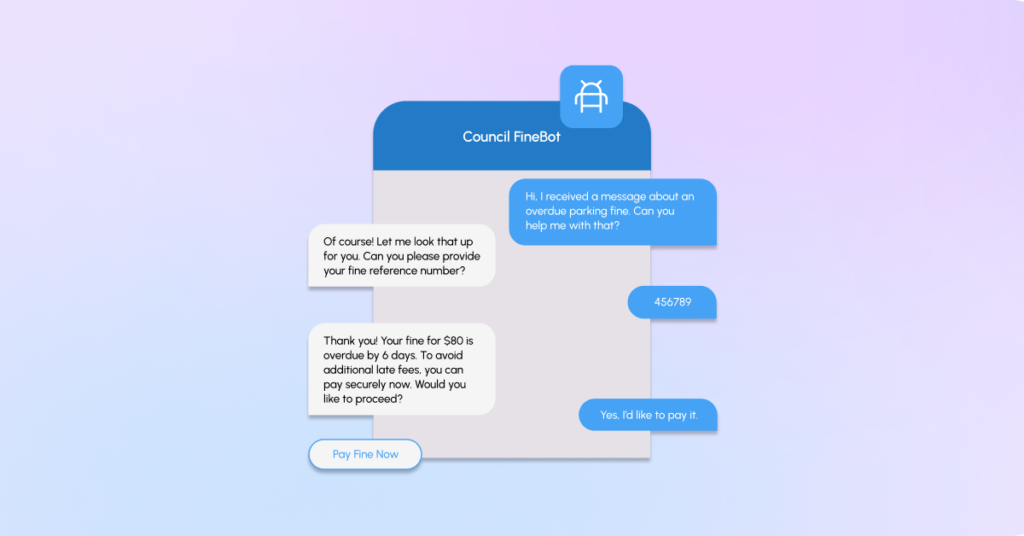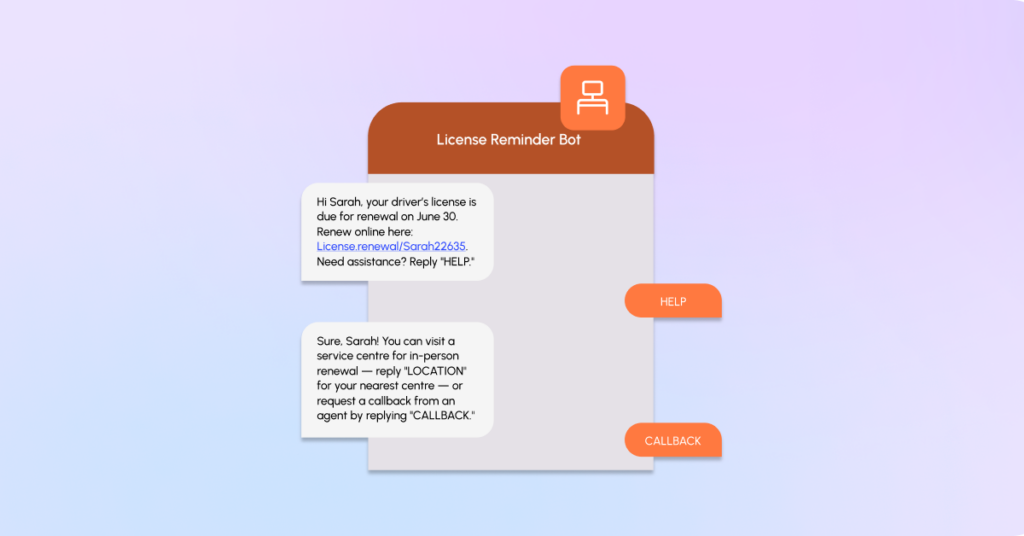
Every public sector organisation strives to provide its citizens with services that contribute to safe, functioning, and engaged communities.
From helping people access vital resources to keeping them informed during critical moments, these interactions form the backbone of trust between citizens and their governments – whether at local, state or federal level.
But let’s face it – keeping up with the sheer volume and complexity of citizen needs isn’t easy for public sector organisations.
Many are stretched thin, juggling outdated systems, limited resources, and coping with a growing demand for faster, more personalised communication.
Couple this with the nuanced nature of modern-day communities – with diverse cultures, languages and preferences all needing to be catered for – and it becomes clear just how challenging it is to meet citizens expectations.
This is exactly where Conversational AI (CAI) can make a difference.
By using Conversational AI, public sector organisations can automate many citizen interactions and provide personalised communication experiences at scale.
Multilingual, always-on capabilities allow government organisations to accommodate the complexities mentioned above, providing accessibility to all citizens and ensuring none are left feeling alienated or unengaged.
The surprising thing is, only 26% of governments have implemented a Conversational AI solution to fuel their citizen engagament.
This blog post will explore 5 specific use cases of how Conversational AI can improve citizen engagement for public sector organisations and hopefully spark some ideas for you!
Let’s get stuck in…
Crisis Communications
During emergencies, public sector organisations play a critical role in keeping citizens safe and informed.
It doesn’t matter if it’s a freak weather event or a widespread health alert, these instances – and the response to them – often throw up huge communication challenges for governments to deal with.
Citizens often have urgent questions they want answers to, and public sector teams can quickly become overwhelmed by the volume of inquiries and the need to provide consistent, reliable information.
While immediate communication channels like SMS are more effective for broadcasting critical updates, they don’t facilitate two-way conversations and therefore can’t provide personalised responses or updates.
This is where Conversational AI becomes a vital tool — not as the first line of communication, but as a dependable support system that helps handle the flood of follow-up questions and concerns.
Conversational AI-powered chatbots or voice assistants can provide real-time updates, answer specific citizen inquiries, and share vital resources in multiple languages, all around the clock.
From directing people to evacuation routes to clarifying emergency procedures, Conversational AI ensures citizens feel informed and supported during times of uncertainty.

Citizen Inquiry Handling
Another great example of how Conversational AI can provide value for public sector organisations is its ability to come to the rescue of overburdened customer service teams.
Public sector organisations often deal with a wide range of citizen inquiries, from straightforward questions like “What are the library opening hours?” to more complex issues about benefits, permits, or tax filing.
The sheer volume of these inquiries can overwhelm customer-facing staff, leading to longer response times and frustration for citizens.
Conversational AI can help lighten the load here.
By handling routine questions, AI-powered chatbots can provide quick answers, guide citizens through common processes, and even escalate inquiries to the right team when needed — all while being available 24/7.
Chatbots aren’t limited by office hours like human customer service agents either, meaning citizens can get answers to their questions whenever they need them — whether it’s late at night when concerns are keeping them awake or during a weekend when no human agents are available.
For example, a citizen could use a chatbot to check the status of an application, find the right form to fill out, or get guidance on local services — all without waiting on hold or having to navigate a complicated process.
This not only improves the citizen experience but also gives customer service teams more breathing room to handle complex cases that require their expertise.
In this way, Conversational AI doesn’t just make inquiry handling faster — it makes it more efficient and stress-free for everyone involved.

Fine & Payment Collection
Collecting fines and payments is rarely straightforward for public sector organisations.
It’s not just about issuing a notice and waiting for payment.
Citizens often have questions or face obstacles that delay resolution — from unclear payment options to disputes over fines or financial constraints.
This is where Conversational AI goes beyond simple automation to offer tailored support.
For example, Conversational AI-powered chatbots can guide citizens through a step-by-step payment process, ensuring they fully understand the charges and payment methods available.
If someone can’t pay a fine in full, the chatbot could offer instalment plans or direct them to financial assistance resources, creating a more empathetic and accessible experience.
Disputes are another common challenge.
Instead of relying on overwhelmed staff to manually handle every contested fine, Conversational AI can gather necessary details through a structured conversation.
Citizens could upload evidence, explain their case, and even receive an immediate acknowledgment of their submission, providing reassurance that their issue is being addressed.
Another big benefit of Conversational AI in this scenario is its ability to adapt to specific citizen needs.
For those who might feel embarrassed or stressed discussing financial matters with a human agent, interacting with a chatbot offers privacy and convenience.
At the same time, the AI can identify cases that truly require human intervention and escalate them with full context, saving time for both parties.
It doesn’t stop at collecting payments either.
By integrating with your messaging channels, Conversational AI can help organisations proactively prevent overdue fines by sending reminders tailored to individual circumstances — whether it’s a payment deadline approaching or a recurring instalment due.

Renewal Reminders
On the topic of reminders, missing a renewal deadline for a permit or an application can quickly snowball into a bigger problem and often represent a disconnect between citizens and the services they rely upon.
Conversational AI helps by making the process more proactive and straightforward.
Instead of relying on citizens to remember key dates, customer-facing chatbots can send timely, personalised reminders through their preferred communication channels.
Let’s imagine a real-world scenario.
Sarah is a busy mum juggling her work commitments with school runs and young children.
She needs to renew her driver’s license, but between meetings and family responsibilities, she forgets about the deadline.
Thanks to Conversational AI though, Sarah gets a reminder the week before her license expires via SMS with a link to a citizen-facing chatbot.
It’s not a generic message, it’s tailored to her renewal date and sent in the way she prefers.
Now, Sarah is engaged and can take action immediately.
Once she’s home from work and put the kids to bed, she clicks the secure link in the reminder message and easily renews her license by uploading her documents via a chatbot conversation, asking questions as she goes.
Her new license application is submitted and without the need to speak to a human support agent.
This example shows how Conversational AI not only makes things easier for Sarah but also for the licensing body, ensuring citizens don’t miss important deadlines and reducing the need for continual follow ups.

Feedback & Surveys
One of the key ways to improve citizen engagement is by making sure their voices are heard — and acted upon.
Public sector organisations need valuable insights from the people they serve to ensure their services meet real needs.
However, traditional feedback methods can often feel impersonal and difficult to navigate.
With Conversational AI though, organisations can engage citizens in a more conversational and accessible way that generates more valuable feedback.
Instead of lengthy forms or static surveys, citizens can have two-way conversations with a chatbot and ask questions or seek clarity on survey requests.
Beyond the initial circulation of feedback and surveys, Conversational AI can even automatically analyse citizen response sentiment and provide real-time insights into how citizens feel about the services you provide.
If a citizen expresses dissatisfaction or concern during their conversation, the AI can trigger follow-up communications, ensuring that issues are addressed promptly or escalating them to the appropriate team.
This not only makes it easier to gather actionable insights, but it also creates a more responsive, dynamic form of engagement that fosters trust and shows citizens their feedback truly matters.

Improve Citizen Engagement with Soprano’s Conversational AI Solution
The stats show that by 2026, 60% of government organisations will prioritise business automation.
At Soprano, we often find that public sector organisations looking to introduce automation and improve their citizen engagement benefit greatly from Conversational AI implementation, just like this UK council did.
If you’re serious about providing your citizens with faster, more efficient and more personalised services, it’s time to explore how Conversational AI can transform your organisation.
The future of public service is here — and it’s powered by Conversational AI.
If you’re keen to learn how you can make the shift towards smarter, more effective citizen engagement, get in touch with us today!
